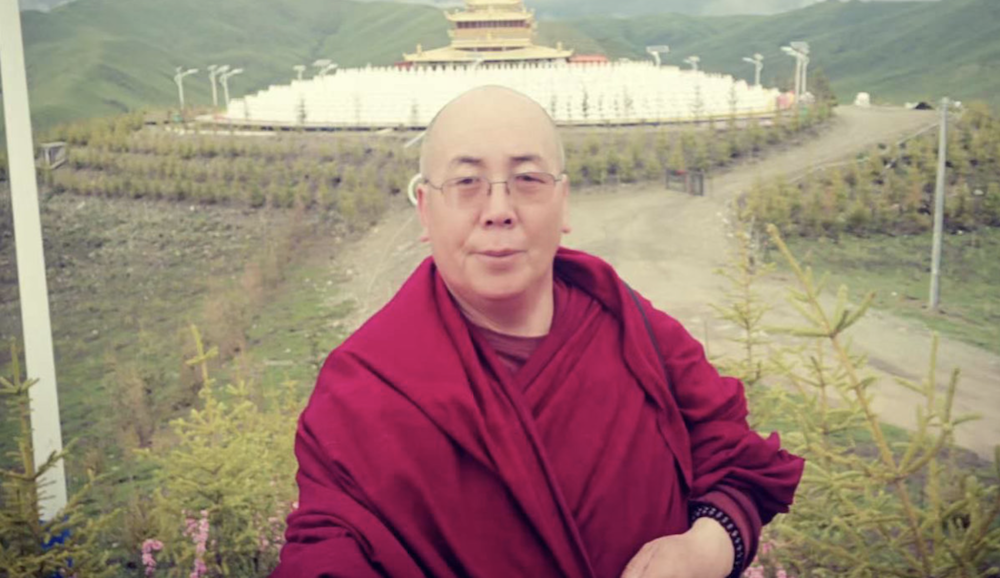By HOWARD W. FRENCH
LHASA, Tibet – They string brilliantly colored flags from the mountaintops here in this land of impossibly crisp blue skies.
Here and there, one finds mounds of smooth, flat rocks, lovingly piled, each inscribed with its own Buddhist scriptural narrative. Water wheels are planted in fast-moving streams, not to harness energy but to turn wooden cylinders laden with scripture. Old women sit on doorsteps in the fading evening light kneading and turning their prayer beads.
Visitors to Tibet, this remote, landlocked nation within another country, China, cannot help being struck by the fact that Tibet, which long since gave up its dreams of independence, is fighting now to retain its soul.
But after driving for a week, covering nearly 1,000 miles across the region, the largest expanse of high altitude territory in the world, a traveler could see clearly that new influences are being felt in this ancient land.
Some are on display at the cream and toffee colored Potala Palace, the exquisite traditional seat of Tibetan government, which sits high atop the hill that dominates this city.
Three days a week, native Tibetans arrive by the thousands, just as they always have, dressed in crimson robes or, more often, well-worn rags, leaning on walking sticks or clutching babies. Many of them have journeyed a week or more in order to make the pilgrimage, often traveling from villages so remote they are not served by roads, but wearing looks of beatitude upon arrival at the palace.
But these days the palace is choked with other, untraditional visitors, Chinese tourists from the east, armed with noisy cellphones and flashing cameras. On the sidewalk in front of the palace these days sit two large concrete dragons, symbols of China’s majority Han culture, placed there not long ago in what has every appearance of being a none-too-subtle statement of political domination. In the shops that line the broad boulevard – Sichuan restaurants, clothing stores and mountaineering-gear sellers, massage parlors and even boutiques flogging Tibetan souvenirs – the faces one sees behind the counters are overwhelmingly those of Han migrants from eastern China.
They are the vanguard of an invasion of commercialism that has raised a pressing question: can an ancient and distinctive culture steeped in religion maintain its lifestyle and identity in the face of an onslaught of Chinese bearing what Tibetans regard as godless materialism and chauvinism backed by the power of the state?
It would seem to be no contest, this struggle between cultures, faiths and peoples. On one side are China’s majority Han, who number over a billion, and on the other, Tibet’s native population of roughly 2.5 million.
China is not only racing to catch up to the West in economic growth and development. Much more quietly, but with determination, it is pushing to dominate vast spaces on its frontier that have eluded its control for millenniums, much as the United States once settled its great West or Australia tamed its Outback.
Everywhere one turns in Tibet, it seems, roads are being built to integrate it with China. The biggest leap forward in this strategy will be the completion of a $3.2 billion railroad in 2007 linking Lhasa to Beijing, a distance of more than 2,400 miles. One can easily foresee the scenes, already common in China’s other frontier region, Xinjiang, to the immediate north, of thousands of economic migrants from the east disembarking with each train’s arrival.
The Chinese Government is well practiced in the phrases of fraternal harmony and cooperation. In Bayi, county seat of 26,000 nestled amid 15,000-foot peaks near the Indian border in eastern Tibet, meanwhile, the two most conspicuous buildings are the gleaming Guangdong and Fujian exhibition centers, huge modern buildings recently built in a flourish of interprovincial “solidarity” with Tibet, China’s poorest region.
In the center of town, smart new apartment towers are going up, too, a duplicate in miniature of the urban development under way almost everywhere in eastern China. With the province’s formal economy and administration firmly in the hands of the Han, though, one imagines with difficulty ethnic Tibetans becoming the main occupants.
For visitors and settlers from the east, maintaining the pretense that ethnic Tibetans and Han Chinese constitute one nation, never mind one people, requires too much effort to sustain. When a foreigner showed interest in a Tibetan prayer wheel at a souvenir shop on one of Bayi’s main streets, the Han shopkeeper began spinning it the wrong way, counterclockwise.
Told of his error, he snorted: “That’s a Tibetan thing. I’m from Gansu, China.”
Another day, on a long hike in the mountains with a Chinese television crew in tow, a Beijing TV reporter, frustrated at the inability of even young villagers to speak Chinese, turned to an American and said in her language, with no irony intended, “It seems as if they are even more foreign than you!”
For now, off the beaten path, signs of Han cultural dominance still fade quickly. The riot of Chinese characters omnipresent on billboards and signs throughout China, for example, gives way to Tibet’s Sanskrit-derived script.
In one tiny village, Xiuba, a cluster of 15 Tibetan farming families atop a bluff overlooking a new highway, not a soul could comfortably hold an extended conversation in Chinese. The village was home to five towering stone pillars, religious monuments said to be more than 1,000 years old.
While girls looked on giggling, Zhaxi, a 22-year-old junior high school graduate, wore a pained look as he struggled to answer potentially perilous questions from a stranger: How was your history being taught and your culture preserved?
“There are some differences between our own beliefs and the way we are taught,” he said, diplomatically. “You could say we have many legends and tales which are not taught to us in school.”









